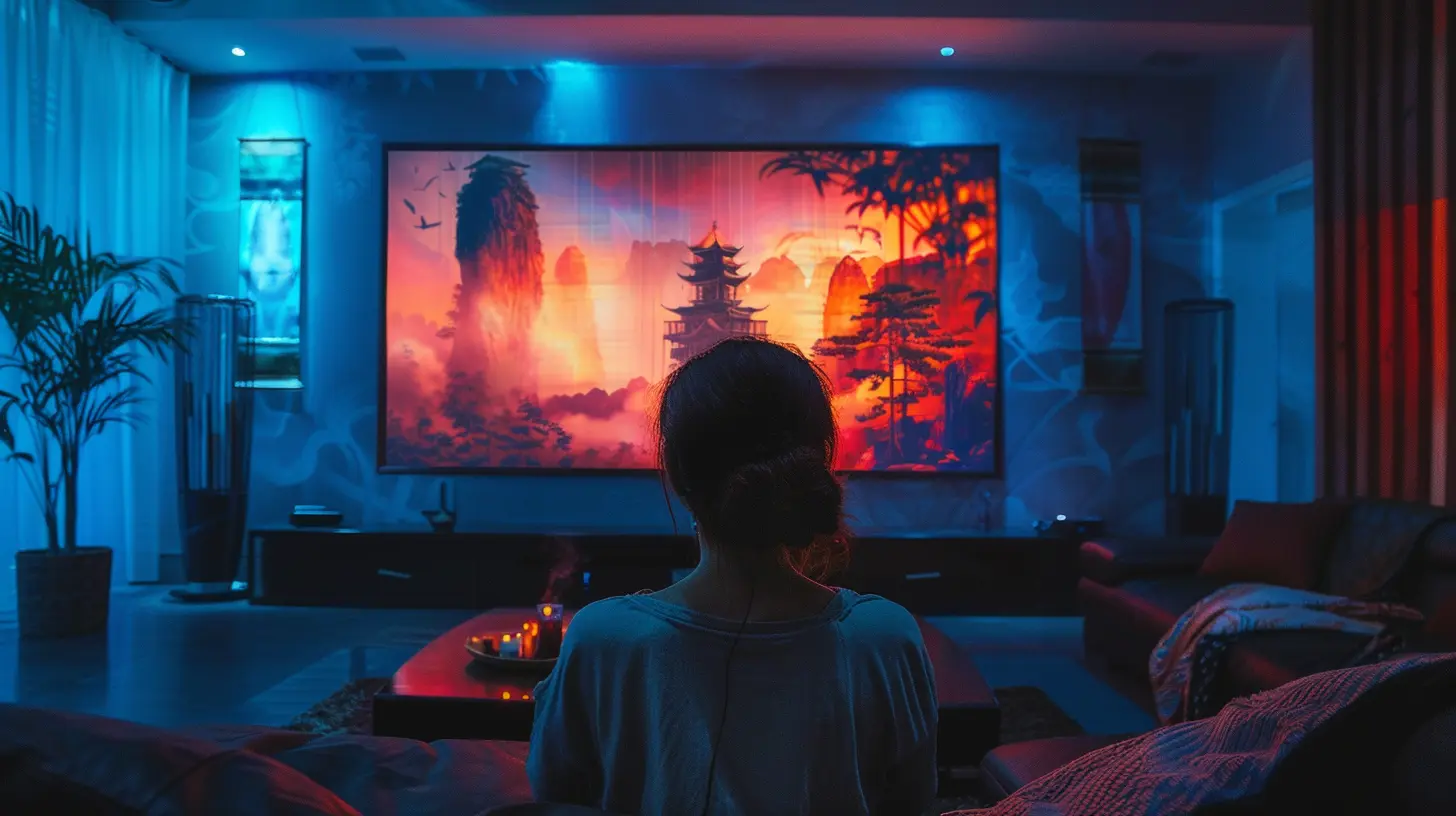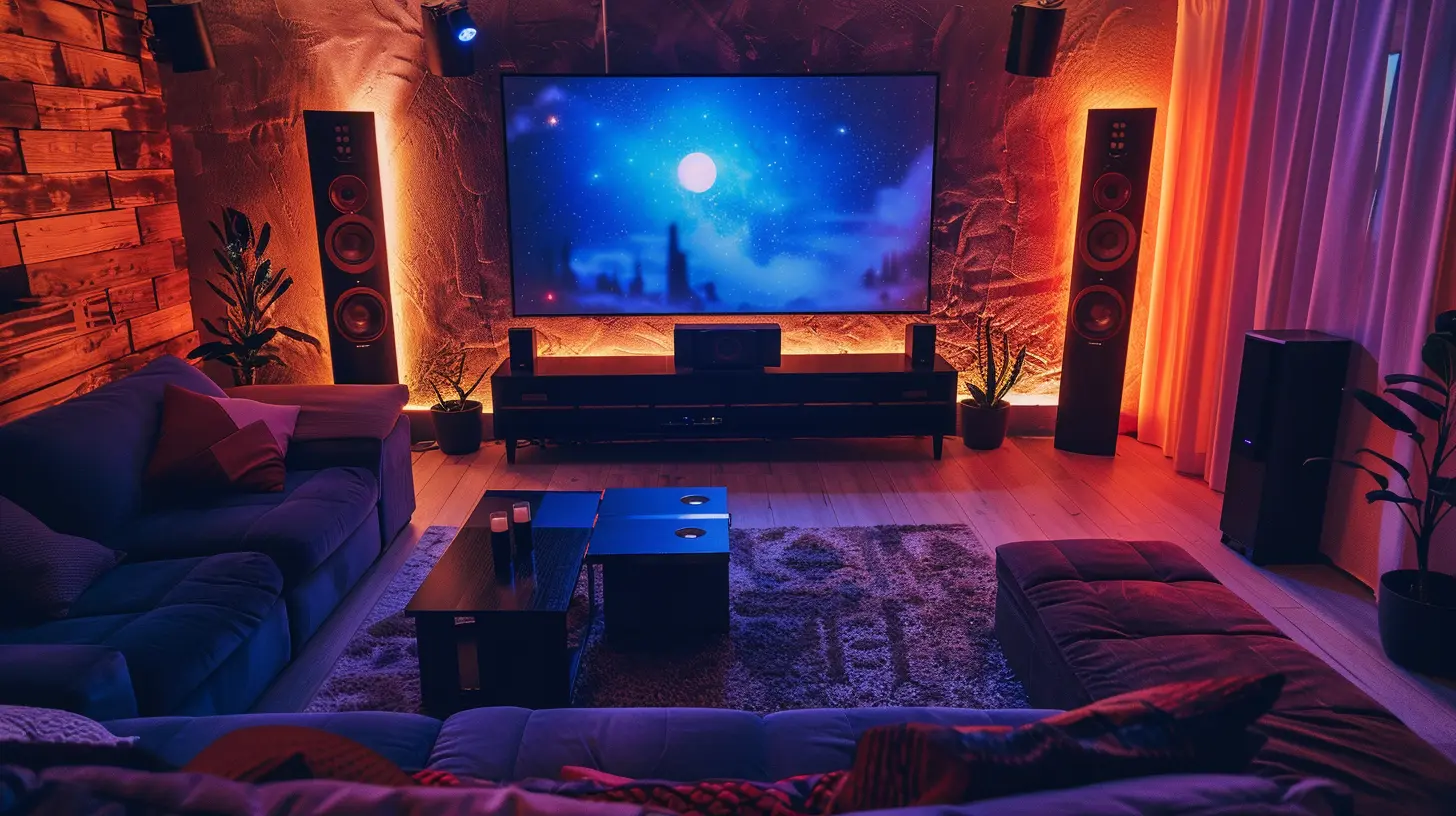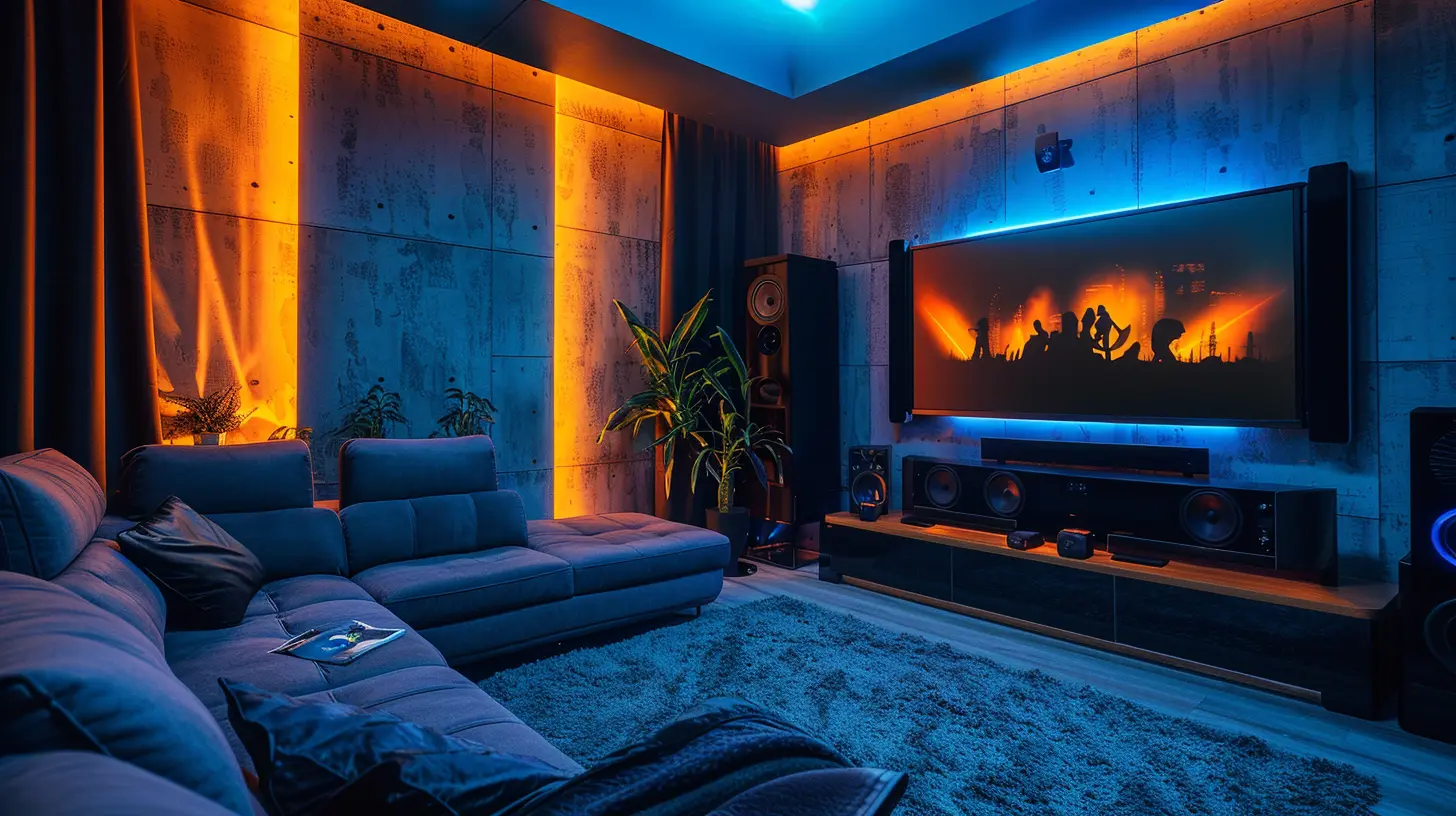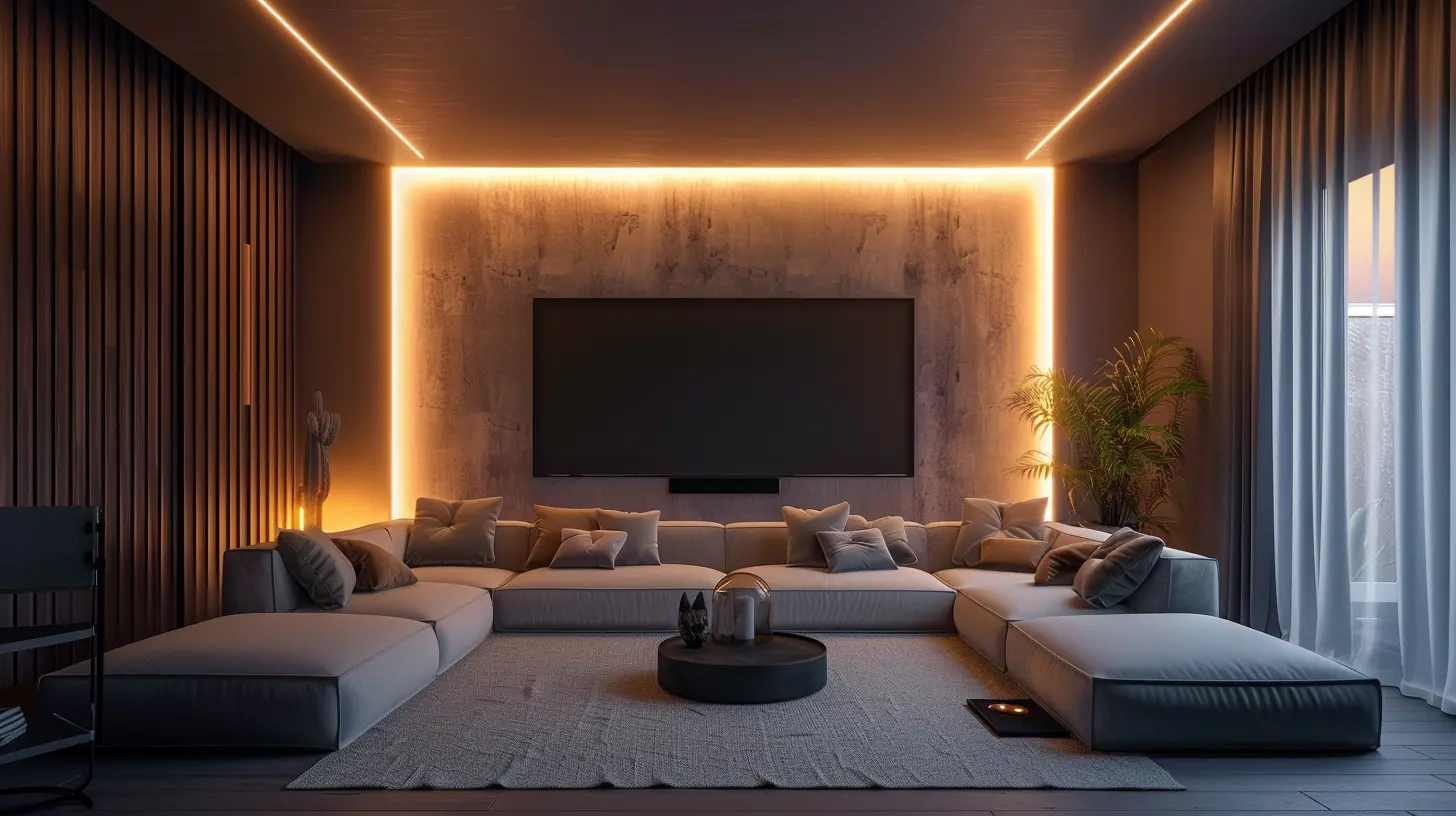Ambient Lighting Tips for an Immersive Movie Experience
19 July 2025
Let’s get real for a second — we’ve all tried to recreate that epic home theater experience. You know, the kind that pulls you into the movie so deeply, you forget you’re lounging on your couch in PJs with a bowl of popcorn dangerously close to spilling. But if your movie nights still feel like you're watching on a laptop in a dentist’s office waiting room, then it's time to talk about ambient lighting.
Yep, lighting might just be the unsung hero of a killer movie night. You could have the best 4K display, surround sound that rattles the walls, and a perfectly popped bowl of popcorn... but if your lighting is off? The mood falls flatter than a rom-com with a predictable plot twist.
Ready to level up your movie-watching game? Let’s break down everything you need to know about ambient lighting for an epic, immersive movie experience right in your living room.
Why Ambient Lighting Matters in a Home Theater Setup
Ever tried to watch a movie in pitch darkness? At first, it feels immersive. But after a while, your eyes start to ache, and your brain begs you to turn on a light — just something. On the flip side, lighting that’s too bright kills the vibe altogether.Ambient lighting is that happy middle ground. It softly illuminates the room without overpowering the screen, letting you sink into the story while keeping your eyes comfy and your focus laser-sharp.
Think of it like background music at a dinner party: it shouldn't be the star, but it sets the mood just right.
The Science Behind Ambient Lighting and Your Eyes
Let’s nerd out a bit (don’t worry, we’ll keep it light). When you watch TV in total darkness, your pupils widen to take in more light. But as the brightness from the screen suddenly hits your eyes, it creates a harsh contrast. Over time, that constant adjustment leads to fatigue, dryness, and strain.Ambient lighting reduces that strain by balancing the light levels in the room. Think of it as a soft buffer that helps your eyes do less work. Bottom line? Proper lighting = longer, more enjoyable binge sessions. And yes, that’s science-approved.
Different Types of Ambient Lighting to Consider
Before you start buying smart bulbs and LED strips like there’s no tomorrow, let’s break down the key types of ambient lighting and how each can contribute to your movie oasis.1. Bias Lighting (The Secret Sauce)
Bias lighting is a game-changer. It’s soft light placed behind your TV or screen that reduces eye strain and enhances contrast. It might not seem like much, but this little upgrade adds a massive cinematic feel to your setup.Try an LED light strip that attaches behind your TV — many come with dimmable and color-adjustable features. You’ll be shocked at how different (and better) your screen looks.
2. Smart Bulbs and Color Ambiance
Smart lighting lets you control brightness and hue with your phone or voice — and some systems even sync with your movie's colors. Imagine the room glowing red during an action scene or turning blue during a snowy moment. It’s like your walls are in the movie too.Philips Hue, LIFX, Govee — all solid options that offer this kind of dynamic ambiance.
3. Floor and Table Lamps
Sometimes, the simplest setup wins. Floor and table lamps with low-wattage bulbs can gently light up the sides of the room without creating glare on the screen. Go for warm white tones, and position the lamps behind seating or in corners for that gentle glow.4. Cove Lighting
Looking to go fancy? Cove lighting — typically hidden in ceiling recesses — casts indirect light that spreads evenly across the room. It’s sleek, minimal, and 100% vibes. Cove lights work best in dedicated home theater rooms but can be adapted for living rooms too.
Key Ambient Lighting Tips for Maximum Movie Magic
Now that we've got the basics down, let’s really dig into those practical tips that'll bring it all together.1. Avoid Overhead Lighting During Movies
Ceiling lights are great for cleaning day. But movie night? Not so much. Harsh overhead lighting creates glare on your screen and kills the immersive feel. Ditch it in favor of softer, indirect sources that let your TV shine without interference.2. Mind Your Light Placement
Light placement is everything. You want the glow to fill the space around your screen, not splash directly onto it. Behind-the-screen lighting (hello, bias lighting) and lamps tucked behind your couch work wonders. Light shouldn't compete with the visuals — it should complement them.3. Warm Light Over Cool for Movie Nights
Color temperature can make or break your space. Warm lights (2700K–3000K) create a cozy, cinema-like feel, while cooler temps (4000K+) can feel sterile and unnatural. Unless you’re going for an operating room aesthetic, stick with warm tones.4. Dimmable Is Non-Negotiable
If your lights can't dim, you're missing out. Dimmable lighting lets you dial in the perfect glow — subtle enough to disappear, but present enough to soothe your eyes. Invest in bulbs or systems you can easily control; your eyeballs will thank you.5. Sync Lighting With Your Content (Optional but Awesome)
Some smart lighting systems sync with your screen’s content in real-time. It’s not essential, but it does add a wow factor that’s hard to ignore. Chased by a T. rex? Your walls glow with each thunderous step. Floating in space? Cool blue hues surround you. Talk about immersion.Creating the Perfect Atmosphere: Step-by-Step Setup
Let’s paint the full picture. Here's how to set up ambient lighting like a pro:Step 1: Install Bias Lighting
Get a USB-powered or Bluetooth LED light strip and attach it to the back of your TV. Set the color to a soft white or match it to your movie’s general tone.Step 2: Add Lamps for Depth
Place a couple of table or floor lamps in corners or behind furniture. Use warm, dimmable bulbs (smart bulbs, if you want full control). Place lamps low and angle them away from the screen — let them cast indirect light.Step 3: Kill the Overhead Light
Turn off that ceiling fixture. Use your accent lighting to create a soft glow instead. If you have recessed ceiling lighting, dim it way down or use smart recessed lights that change color and brightness.Step 4: Fine-Tune Brightness and Color
Once everything’s set up, adjust the brightness levels to find the perfect balance. Not too bright, not too dark — aim for that “sunset afterglow” vibe.Step 5: Test It With a Movie
Queue up your favorite cinematic masterpiece, hit play, and experience the difference. Your screen should pop, your eyes should relax, and your living room should feel like a mini movie palace.Common Ambient Lighting Mistakes to Avoid
We’ve talked about what to do — now here are a few “don’ts” you'll want to steer clear of.- Glare alert: Avoid placing lights where they reflect directly on the screen.
- Too many colors: RGB lighting is fun, but don’t turn your room into a disco (unless you're watching Saturday Night Fever).
- Inconsistent style: Keep your light tones consistent throughout the room. Mismatched colors can feel chaotic instead of cozy.
- Ignoring natural light: Watching during the day? Use blackout curtains to block out sunlight for full immersion.
Bonus Tips to Enhance the Mood Even More
Lighting’s the headliner here, but don’t ignore the supporting cast. For the full package:- Block out outside light with blackout curtains or drapes.
- Use rugs and textured fabrics to soak up echoes (acoustics matter).
- Add scent: A subtle candle or a popcorn-scented diffuser? Instant nostalgia.
- Keep a remote nearby for lights, sound, and temperature. Total control = total immersion.
Ambient lighting is just one piece of the puzzle, but wow, what a difference it makes.
Final Thoughts: Let the Lights Set the Stage
When it comes down to it, ambient lighting is the magic ingredient that separates movie night from “movie experience.” It’s not just about seeing clearly — it’s about feeling the movie. With the right setup, your living room becomes a private theater, your screen comes to life, and you... well, you forget the world for a couple of hours.And isn’t that what good cinema is all about?
So go ahead — dim the lights, grab your coziest blanket, and start streaming. You've got the setup. Now you just need the popcorn.
all images in this post were generated using AI tools
Category:
Home EntertainmentAuthor:

John Peterson
Discussion
rate this article
1 comments
Sabrina Thornton
Great tips! Ambient lighting truly enhances the viewing experience by setting the right mood. Dimming lights and using colored LEDs can transform any movie night into a cinematic adventure.
July 23, 2025 at 12:53 PM

John Peterson
Thank you! I'm glad you found the tips helpful. Ambient lighting really does elevate the movie-watching experience!


